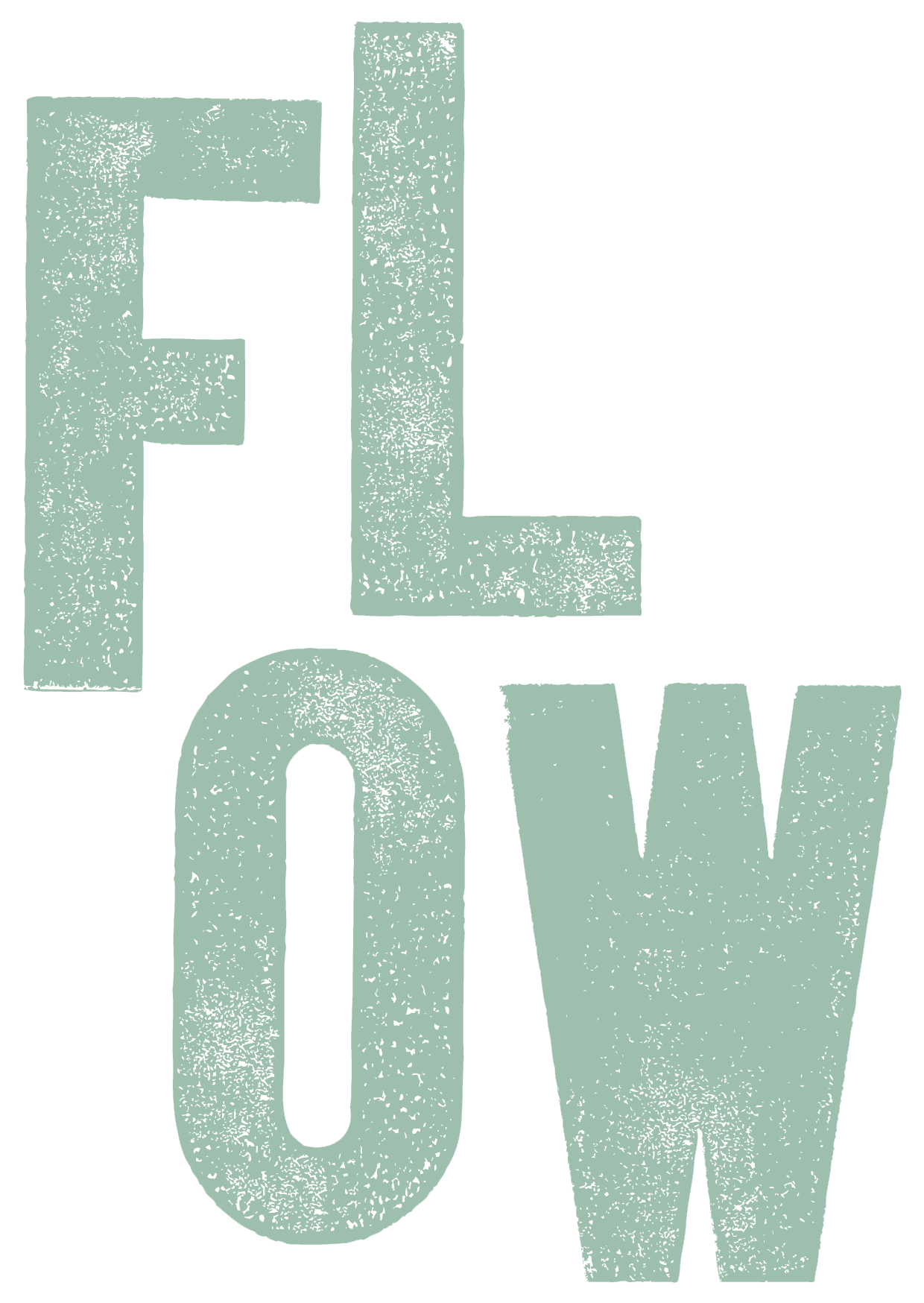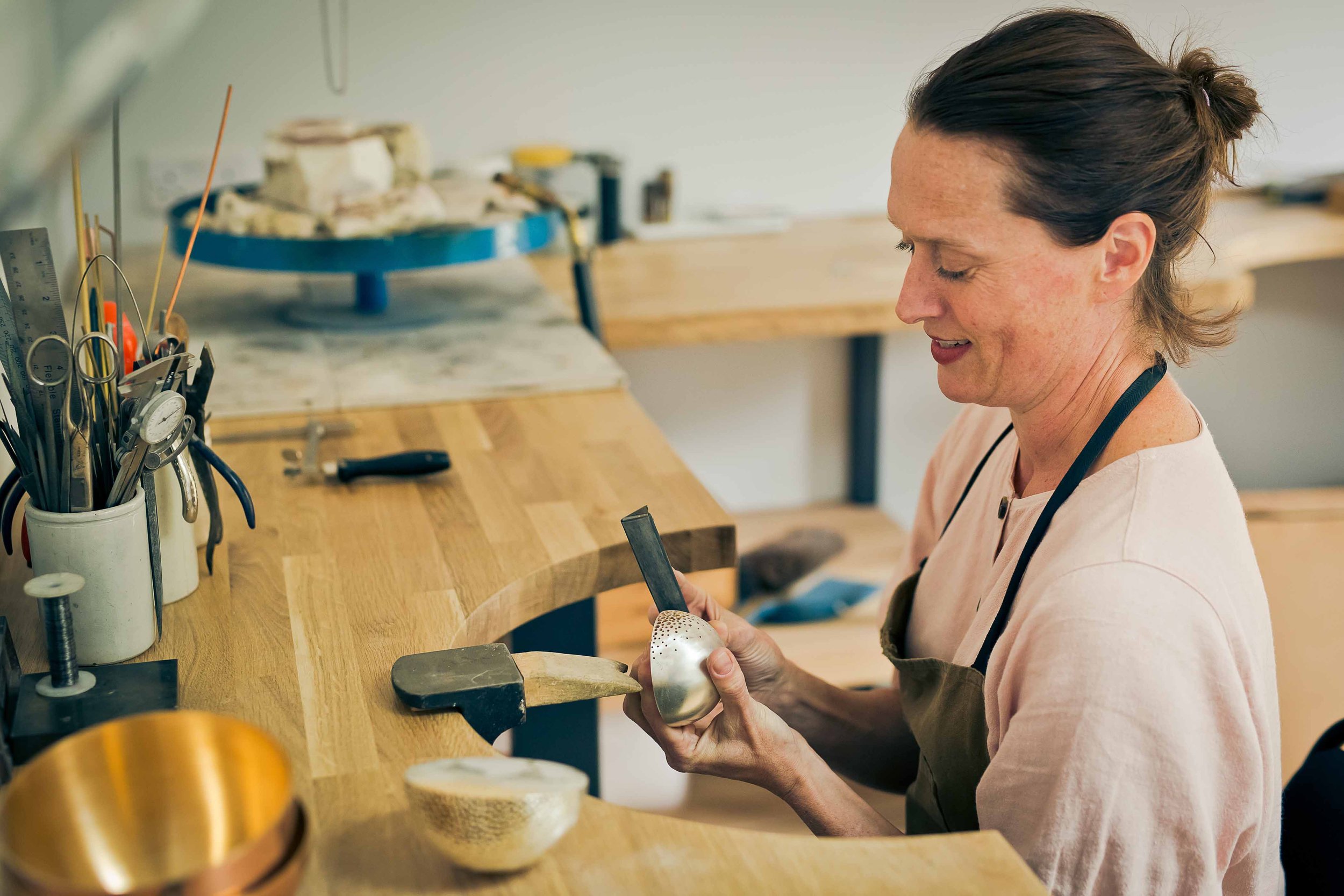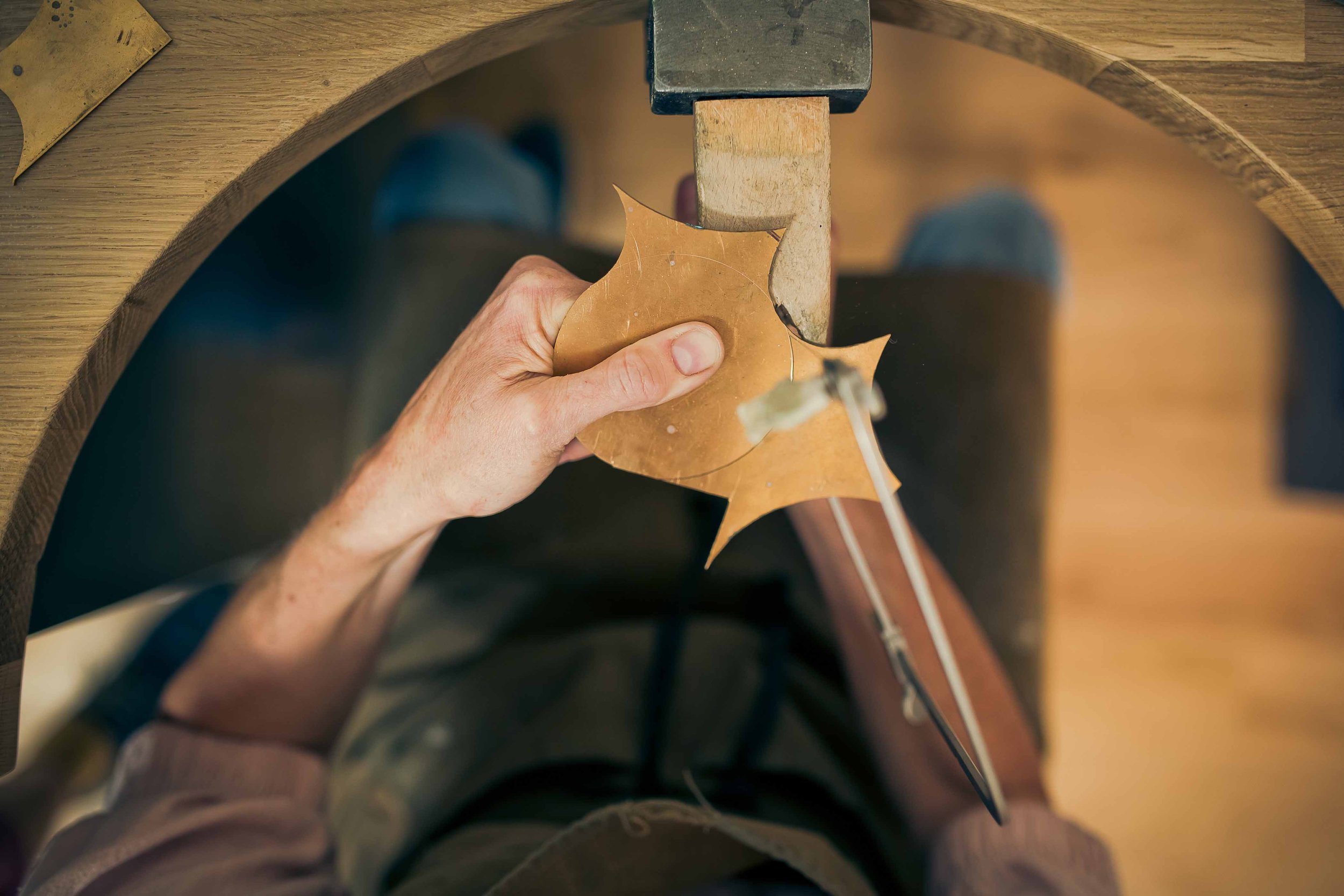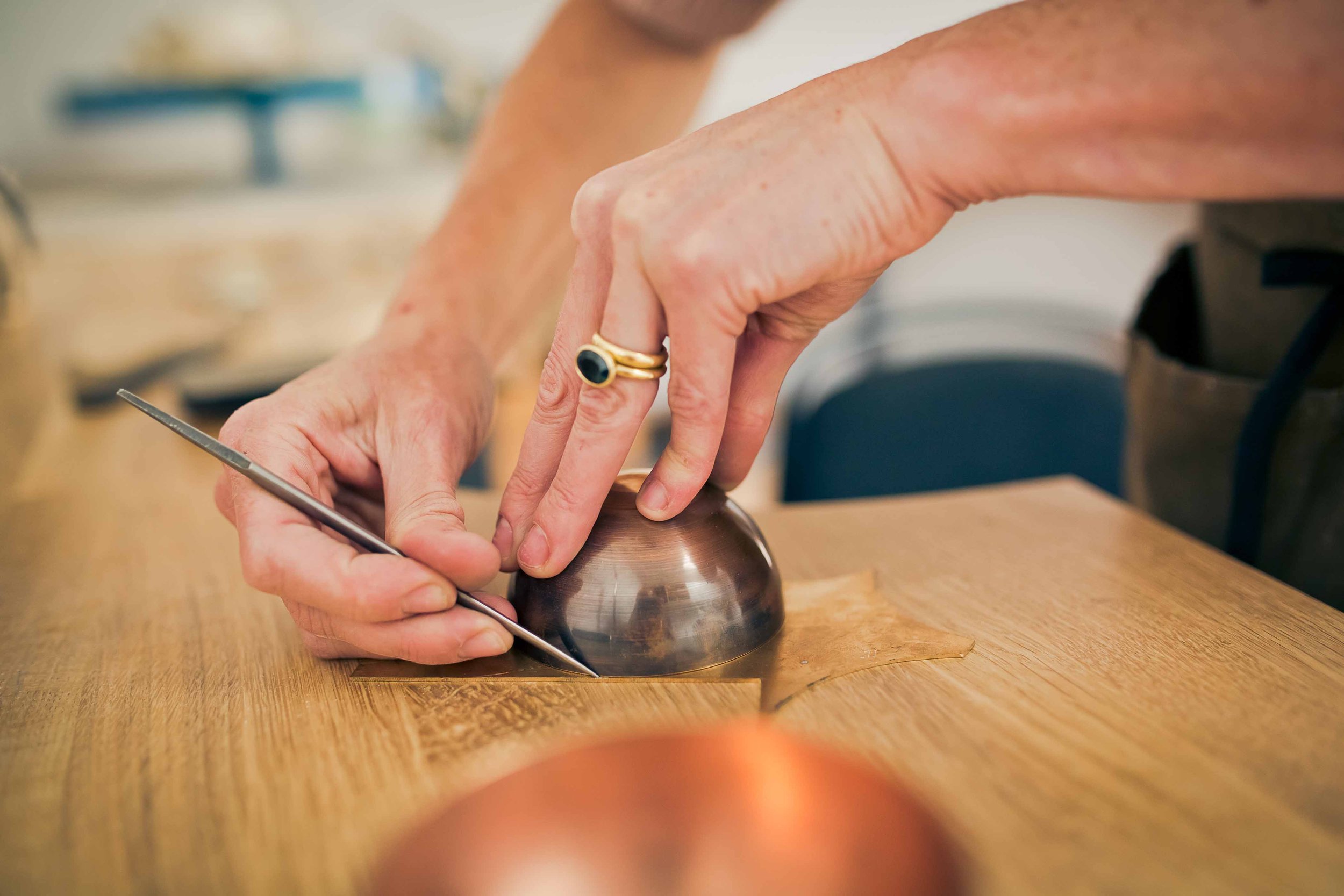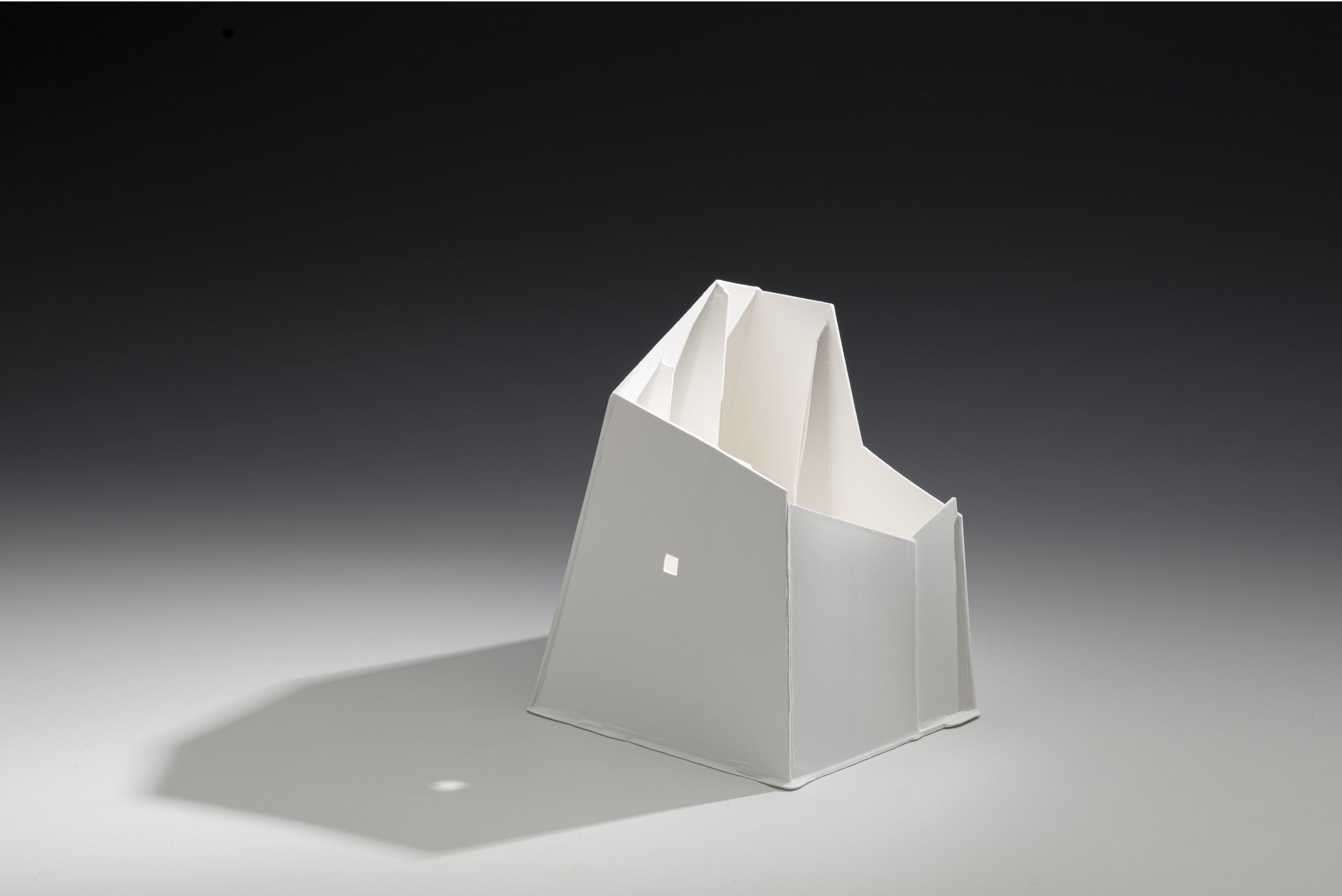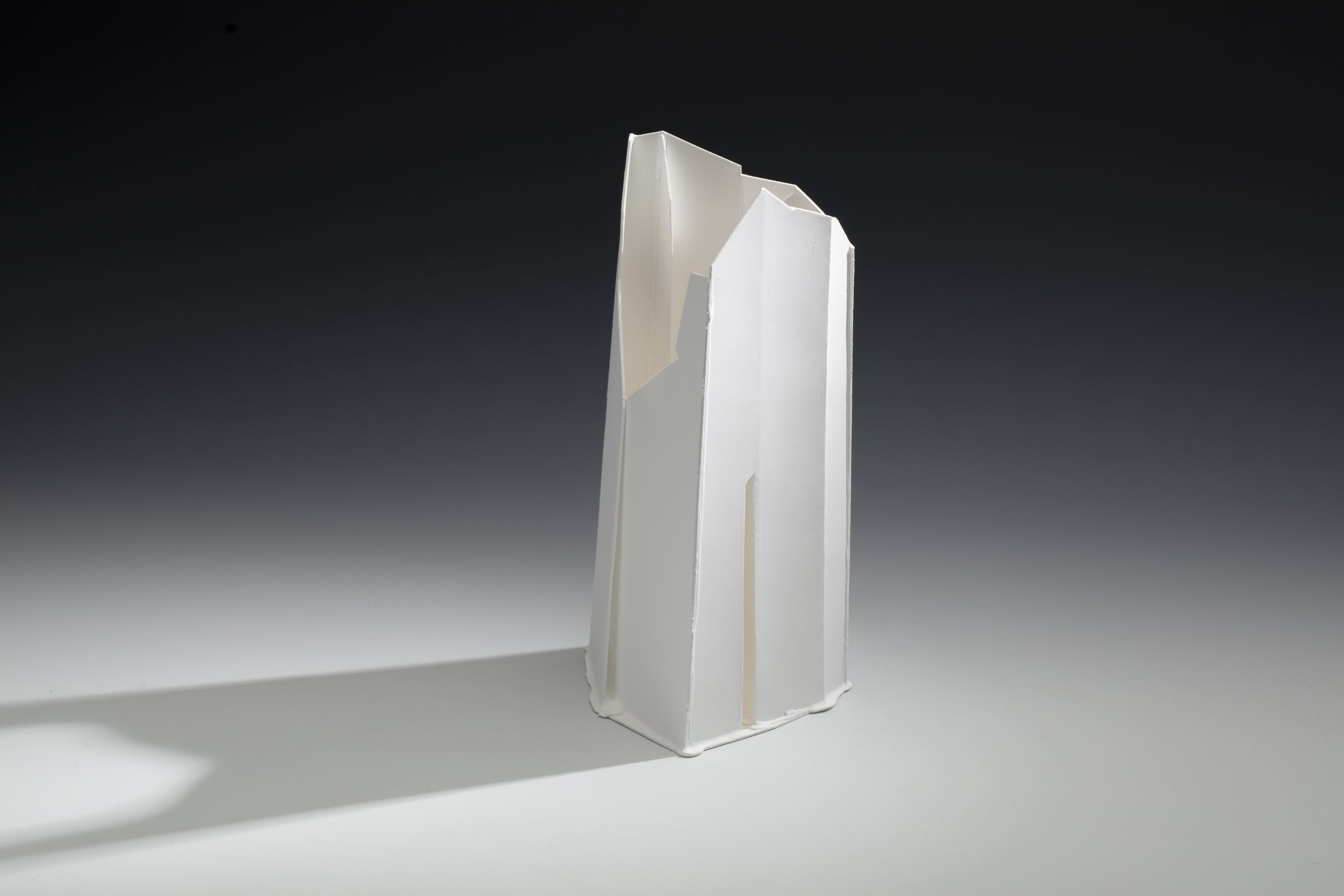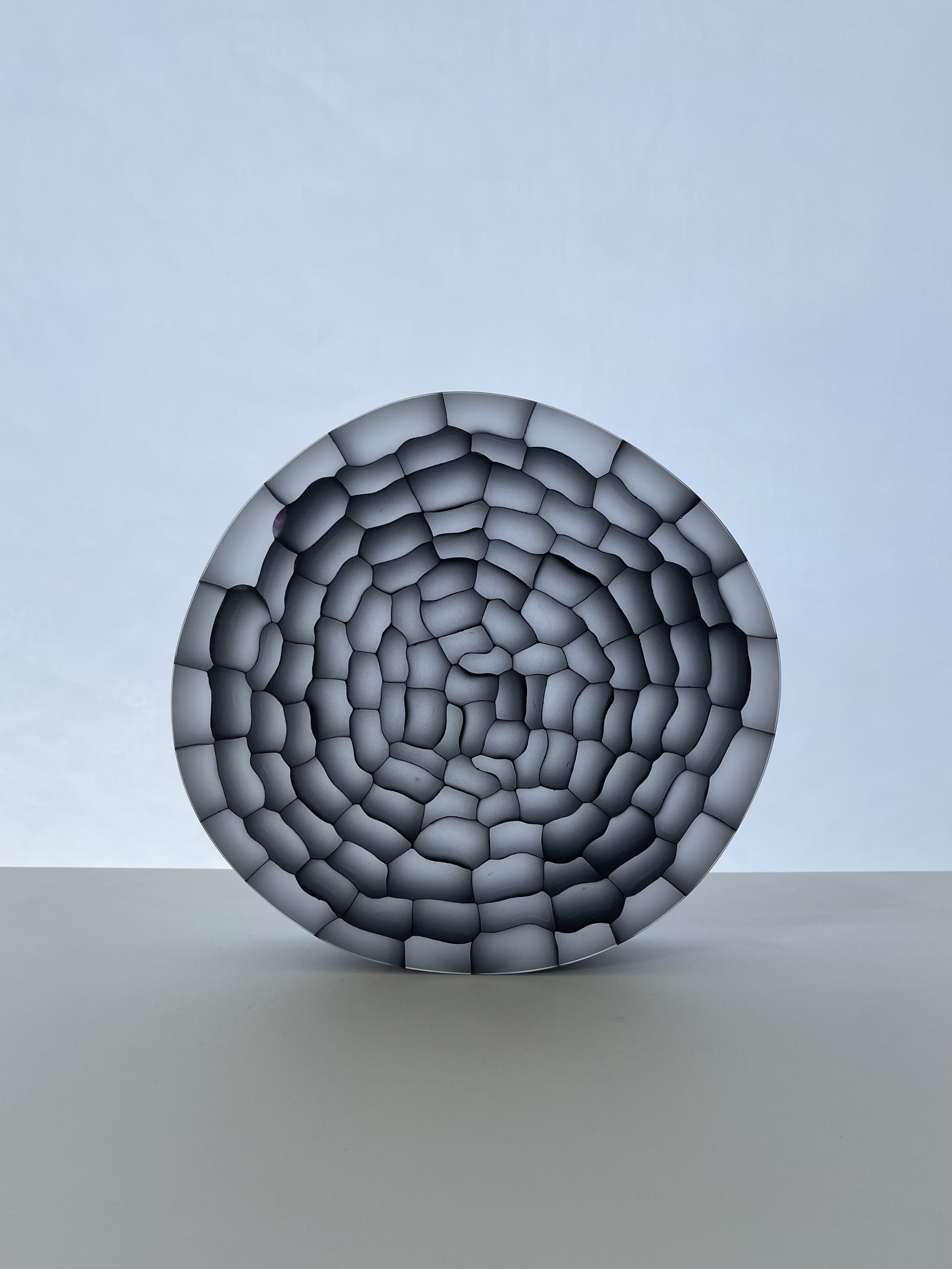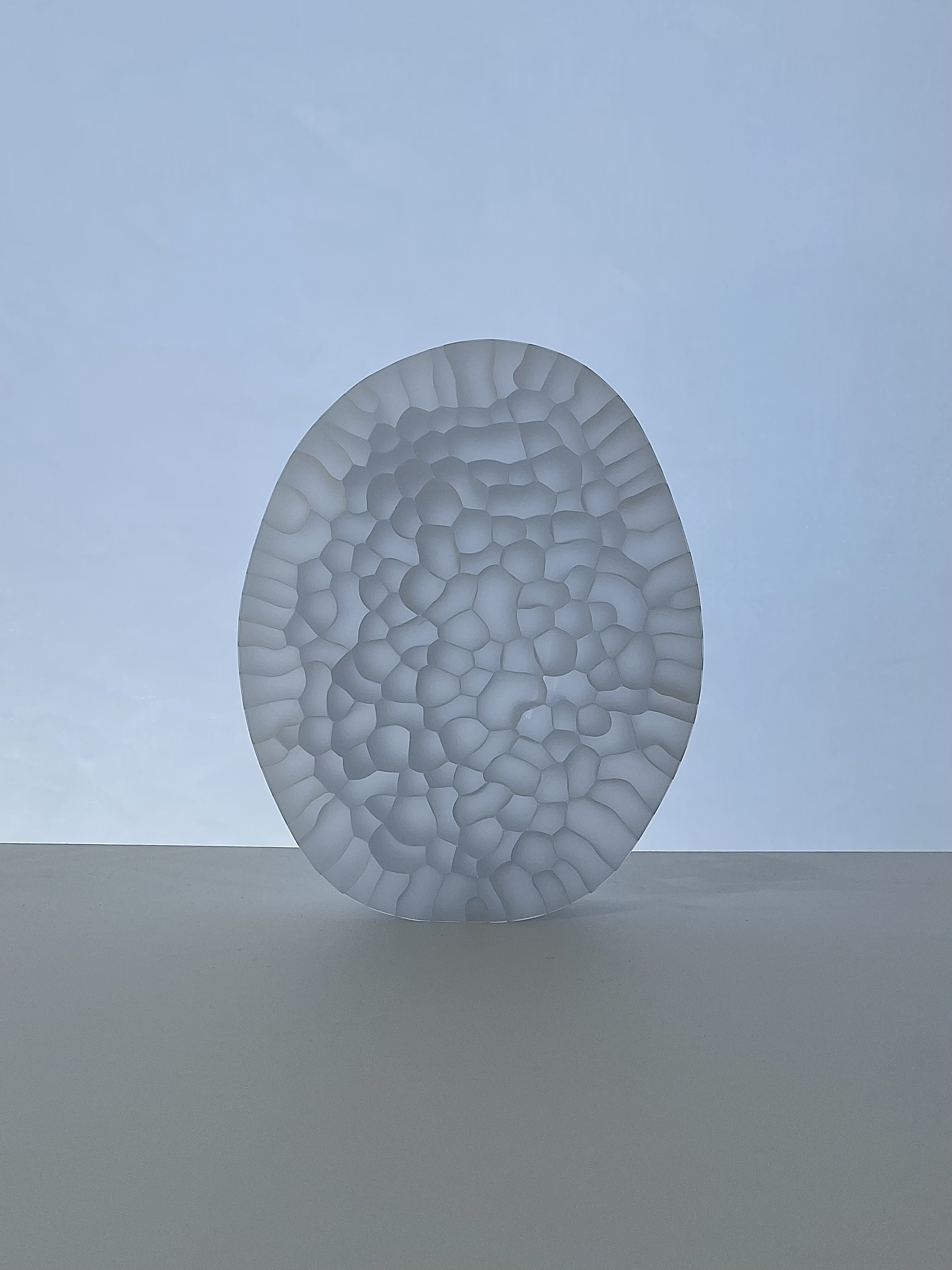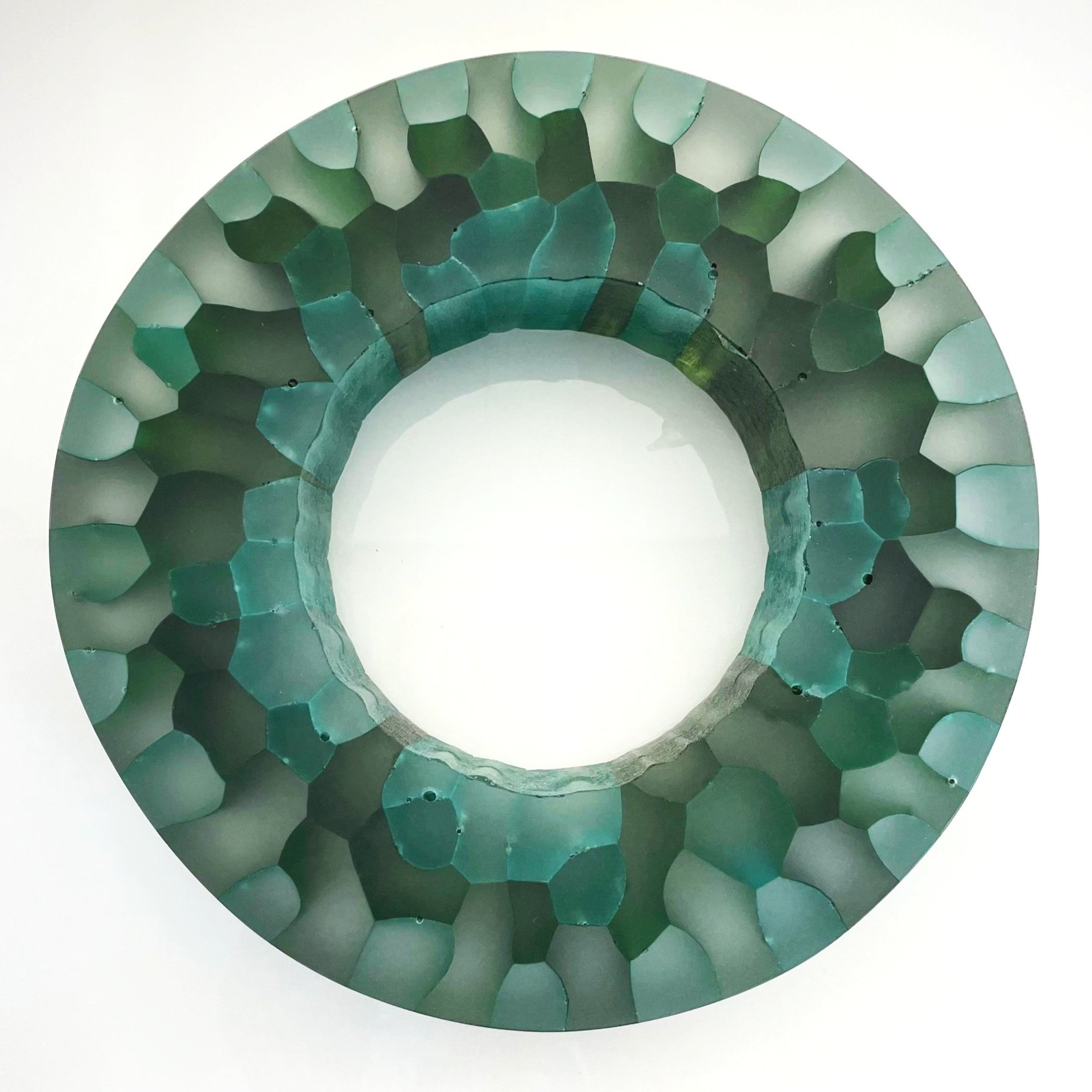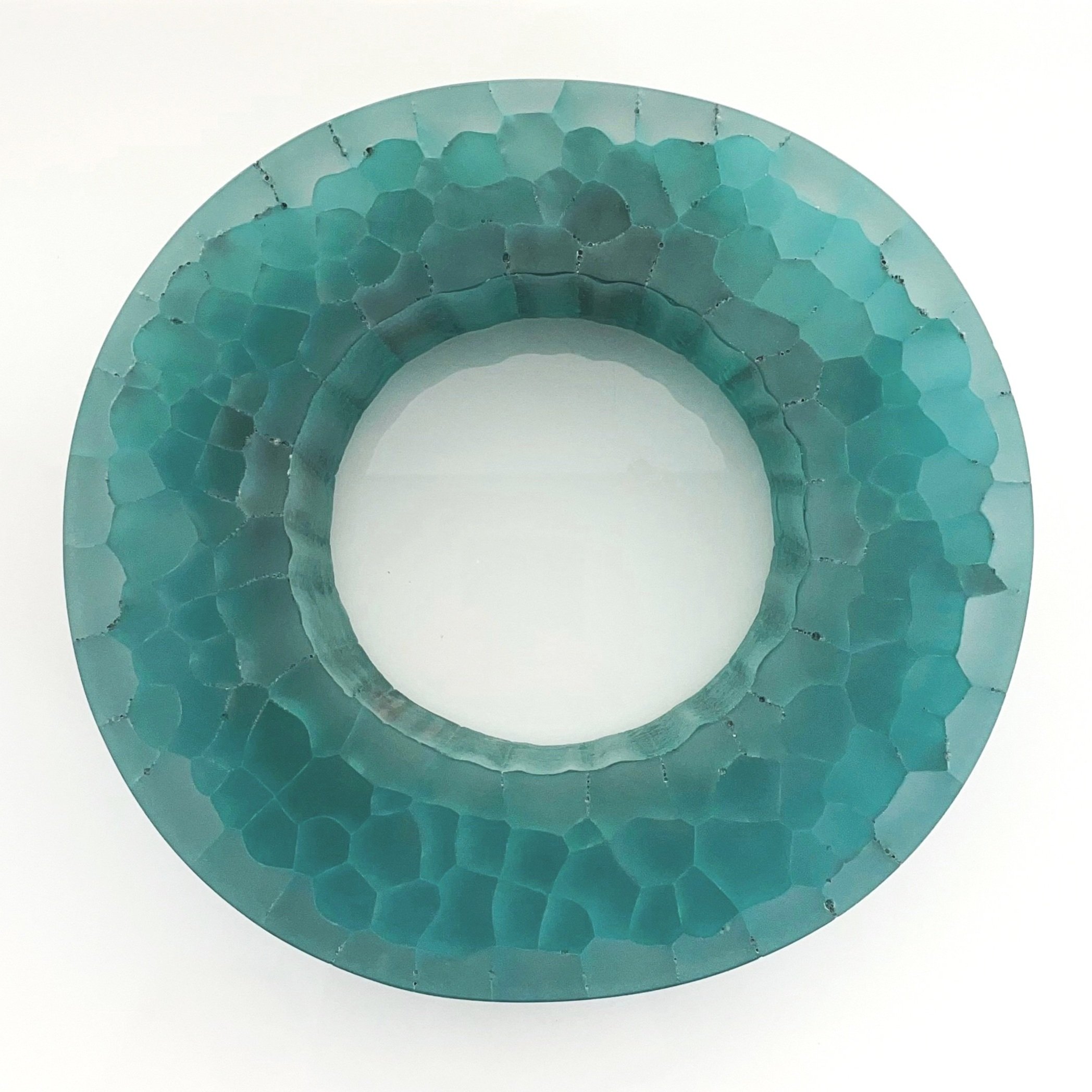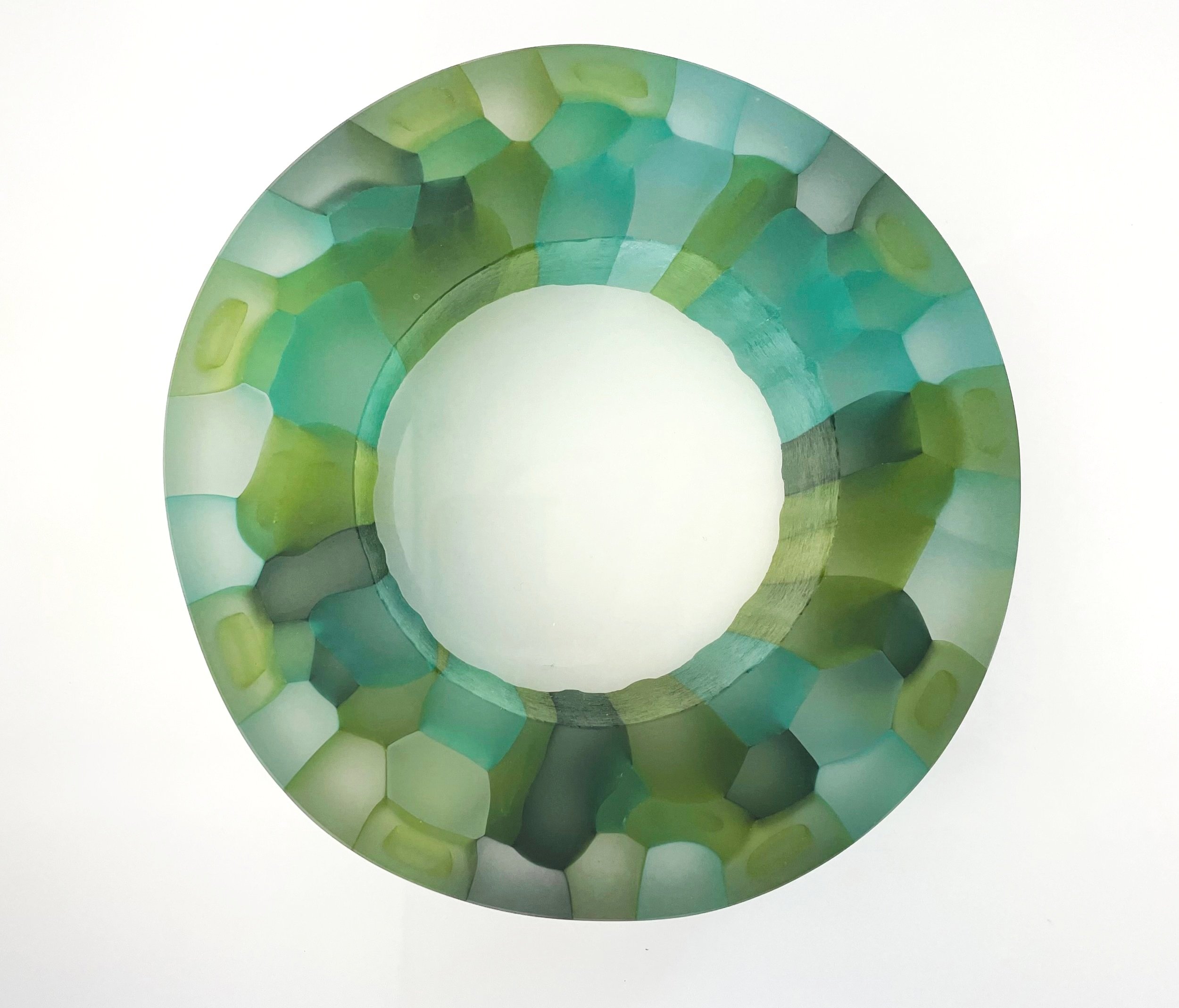An Exhibition of Danish Craft – ‘Constructing Space’
10th May - 1st July
Flow Gallery x London Craft Week
Supported by the Danish Arts Foundation and the Embassy of Denmark in London
Opening as part of London Craft Week, Flow Gallery’s new show ‘Constructing Space’ exhibits three Danish artists: Ane Christensen, Heidi Hentze & Trine Drivsholm.
Discover more about the exhibition below, including interviews with the artists.
Ane Christensen, ‘Cube Bowls’, patinated brass, silver and steel. Photograph: Nicola Tree
An Introduction from Gallery Director, Yvonna Demczynska:
In ‘Constructing Space’, we present three female Danish artists, Ane Christensen, Heidi Hentze and Trine Drivsholm. Through their different materials – metal, porcelain, and glass – the artists give a lens into the amazing diversity of contemporary Danish craft.
Their work has never been shown together before, yet Christensen, Hentze and Drivsholm are of the same generation, and are all at an exciting mid-career stage – each show a mature practice and mastery of their materials, yet are still driven by experimentation and evolution.
Developing the exhibition, the Flow team were inspired by how the artists’ different mediums invite contrast and comparison, whilst communicating in a similar visual language. We hope that by bringing these works together, visitors will be encouraged to contemplate how shared concepts and themes are explored in beautifully distinct ways.
Join us for a talk with the artists, at 6.30pm on the 10th May
Heidi Hentze, ‘Oval Room’, porcelain.
The phrase ‘Constructing Space’ refers to the artists’ ability to manipulate their materials and create the feeling of forms being continuously constructed and deconstructed. Ane Christensen, for instance, describes her work as “line drawing in space”, where material defies gravity. Each artist pushes the possibilities of form versus absence, exploring negative space and the interaction between light and shadow. Air and light, therefore, become ephemeral “materials” across all the artists’ work.
Thematically, all the artists also present an interpretation of geometry – whether mathematical or organic. Geometric forms emphasise a sense of ‘structure’, creating visual interest through shape, angles and a sense of balance. In their own ways, the artists enhance these spatial elements through the unique qualities of their mediums. Interpretations of balance and fragility are further emphasised through the objects’ lack of conventional function. In itself, this challenges viewers’ preconceptions of the purpose of craft and highlights the sculptural element inherent in the exhibition’s pieces. Together, their diverse artistic practices become poetic and quietly subversive explorations of the interactions between material and space.
Trine Drivsholm, works from the ‘Botanical Structure’ series, glass.
Meet the Makers
Ane Christensen – Metal
“I always try and capture the fluid, loose energy of line drawing in my work, in the third dimension… I want my work to have a sense of lightness and effortlessness”
– Ane Christensen
Ane Christensen’s work in metal transforms familiar, functional forms, quietly contemplating how a simple shape like a bowl can become a visually complex, open and delicate structure. Beginning with flat sheets of metal, Christensen applies traditional techniques like hand piercing, drilling and soldering to construct her pieces. The combination of varied metals furthers her exploration of colour and texture, deepening the viewers’ experience of shapes.
Ane Christensen, ‘Wilderness Bowl’, black patinated brass. Photograph: Nicola Tree
Using geometry as a starting point, Christensen departs from the original form whilst leaving enough of it to still be recognisable, as in her ‘Ghost Bowls’. For her, “The geometric element is important as it serves as a contrast to more random or chaotic elements in the final work.” Yet, the immensely controlled making process and formal qualities of each piece’s structure are counter-balanced by shadow – the unpredictable, constantly evolving element of her work. She describes how “I sometimes construct shadows in metal as a way to capture them and make them part of a piece. I hand-draw each shadow before piercing them out of sheet metal. Winter is the best time for drawing as the low sun creates beautifully dramatic and distorted shadows.”
Ane Christensen, Workshop portraits. Photograph: Paul Reed
“Every piece I make is a meeting of contrasting elements within a form. The meeting point and tension between elements such as dark & light, heavy & delicate, solid & open or soft & sharp is the essence of my practice. I am never looking to create perfect balance within my work. I find pieces which are slightly awkward or off-balance more engaging and relevant.”
– Ane Christensen
The mysterious meeting point between form and absence, structure and shadow, creates a sense of illusion. Each piece therefore playfully challenges perception: “My work often appears weightless or as if floating, although it is in fact very heavy or precariously balanced whilst quite sturdy. I use illusion to add visual movement to my work.”
Ane Christensen, ‘Ghost Bowl’ , sterling silver. Photograph: Nicola Tree
Heidi Hentze – Porcelain
“My hope is that these new Architectonic pieces will present the viewer with a bit of an "it reminds me of..." feeling, and simultaneously with a curiosity into how they were constructed.”
– Heidi Hentze
Heidi Hentze investigates porcelain and glaze in poetically folded pieces. Based on inspiration from architecture and Kirigami, her ‘Architectonics’ collection for this exhibition challenges our perceptions of material, gravity, and classic slab techniques. Meticulously assembling paper-thin clay constructions, Hentze applies an extraordinary level of skill to slab-building – “a very precise and time-consuming process, in which I challenge the boundaries of how thin my porcelain can be without breaking.” It is a process of precision, accident and experimentation.
Heidi Hentze, Mirroring Water, porcelain.
“It is often the mishaps that open up new paths in my work and in this manner, I constantly advance my technique. The walls in my works are a compromise between patterns, shadow play and supporting constructions.”
– Heidi Hentze
Developing the structure of the ‘Architectonics’ begins by intuitively cutting geometric shapes into cardboard, which are then taped together to explore the possibilities of sculptural form. These cardboard shapes become architectural ‘walls’, that are then drawn onto clay and cut out. Where this collection for Flow departs from her usual process is a new conceptual idea: using the leftover cut-offs from previous projects.
Heidi Hentze, Architectonics, porcelain.
“These cut-offs revealed to me a more intuitive and unexpected composition of patterns, angles and colours. Thus, they are an architectural construction that I could not have planned with my ruler and my perfectionism. It's a bit transgressive for me, to give up control, but also quite refreshing to work in this more playful and imperfect manner.”
– Heidi Hentze
Heidi Hentze, Workshop portrait. Photograph: Rasmus Kvist Media
Trine Drivsholm – Glass
“All my work evolves from observations and impressions found in the Natural world: details, patterns, texture, shapes, colour nuances, combinations, found objects. In Nature you can find everything from perfection to chaos, and to find ways to express this is a never-ending source of inspiration for me.”
– Trine Drivsholm
Trine Drivsholm’s work muses on nature through the possibilities of glass. Interested in the correlation between form and surface, her pieces use texture to underline shapes, and vice versa. The artworks express organic matter, whilst surfaces are tactile. She utilizes both techniques in the hot process and in the cold shop to achieve a soft surface, which lets light shine through without being completely transparent. This approach to glass enables her to master its ability to communicate light, detail and depth.
Trine Drivsholm, ‘Botanical Structure’ Black & White.
“I emphasise the natural translucent qualities of the material but at the same time, the silky matte surface helps to define the shape of each piece. The qualities of glass as a transparent material can create illusions of softness, fluidity, lightness and transparency.”
– Trine Drivsholm
Trine Drivsholm, Workshop Portrait.
The ‘Botanical Structure’ series shown in this exhibition is inspired by the investigation of plant structures that are only visible at a microscopic level. There is an abstract reference to geometric form, through the lens of organic patterns. The pieces do not represent scientifically accurate copies of nature and are instead Drivsholm’s “translations of what could be seen in nature”.
“In the ‘Botanical Structure’ series, I work with different shapes and rhythms of pattern to visualise the endless variation in the Natural world. The pieces appear to be light hollow structures but are made out of solid glass canes and therefore quite heavy. In ‘Decay’ and ‘Inside Out’ it is about looking at plant structures from the inside: things that appear perfect, at a closer look, could also show signs of decay. At the same time, the surface is only visible on the inside of the hollow form so the piece itself is “Inside Out”.”
– Trine Drivsholm
Trine Drivsholm, ‘Decay, Green’, ‘Decay, Smaragd’, & ‘Inside Out, Green’
Join us for a talk with the artists, at 6.30pm on the 10th May
